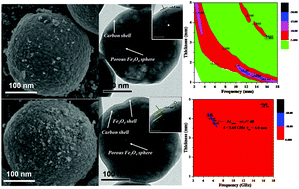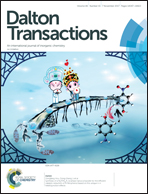Constructing hierarchical porous nanospheres for versatile microwave response approaches: the effect of architectural design†
Abstract
Owing to their immense potential in functionalized applications, tremendous interest has been devoted to the design and synthesis of nanostructures. The introduction of sufficient amount of microwaves into the absorbers on the premise that the dissipation capacity is strong enough remains a key challenge. Pursuing a general methodology to overcome the incompatibility is of great importance. There is widespread interest in designing the materials with specific architectures. Herein, the common absorber candidates were chosen to feature the hierarchical porous Fe3O4@C@Fe3O4 nanospheres. Due to the reduced skin effect (induced by low-conductivity Fe3O4 outer layer), multiple interfacial polarizations and scattering (due to the ternary hierarchical structures and nanoporous inner core) as well as the improved magnetic dissipation ability (because of multiple magnetic components), the material design enabled a promising microwave absorption performance. This study not only illustrates the primary mechanisms for the improved microwave absorption performance but also underscores the potential in designing the particular architectures as a strategy for achieving the compatibility characteristics.



 Please wait while we load your content...
Please wait while we load your content...